Imagine starting an online business with nothing but a laptop and an internet connection without ever worrying about inventory or shipping. With minimal investment, immense flexibility, and sheer independence, it’s no wonder dropshipping has become the go-to choice for aspiring entrepreneurs.
Stories of individuals turning their startups into six-figure businesses are becoming common. Take Irwin Dominguez, for example. He started his dropshipping business with just a few hundred dollars. Within eight months, he generated over $1 million in profit.
As this trend continues to grow, the future of dropshipping is set to expand even more with new challenges and exciting prospects – from ever-evolving technologies to shifting customer demands and market dynamics.
So, what does the future hold for dropshipping? In this blog post, I’ll answer that and share guidance for you to navigate the trends and challenges that dropshipping entrepreneurs will likely face in the coming years.
Table of Contents
Dropshipping Market: Key Statistics and Insights
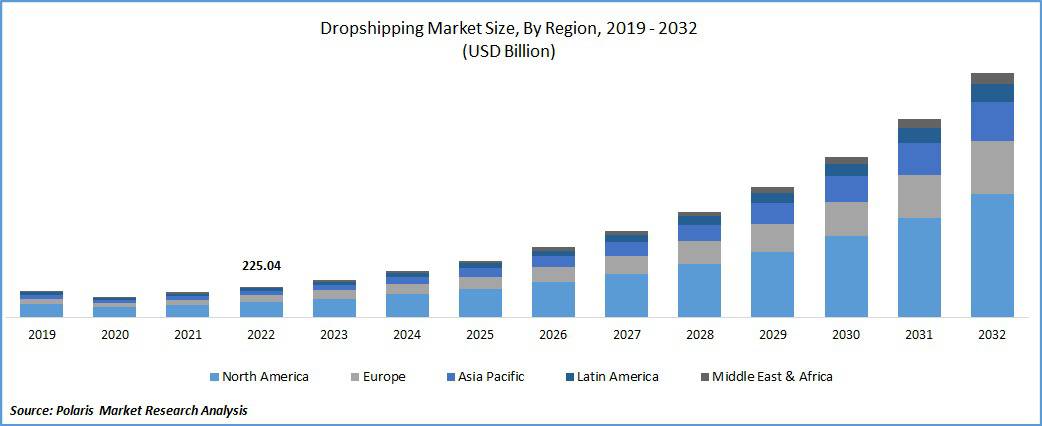
Industry growth
The global dropshipping market was valued at USD 276.71 billion in 2023 and is expected to reach USD 1,253.79 billion by 2030 – an annual growth rate of 23.4%.
This growth is primarily driven by the expanding e-commerce market, increased social media influence, and consumer shifts due to the COVID-19 pandemic.
Profitability
Dropshipping is not only popular but also remarkably profitable. E-commerce retailers using dropshipping earn 50% more than those managing their own inventory.
Dropshipping contributes to 23% of all online sales, with dropshippers earning 20 to 30% profit per sale.
Regional market dynamics
Regionally, Asia Pacific leads the dropshipping market with a 33.92% share in 2022, driven by the rapid growth of the e-commerce sector. North America is also growing, especially with the adoption of artificial intelligence in dropshipping.
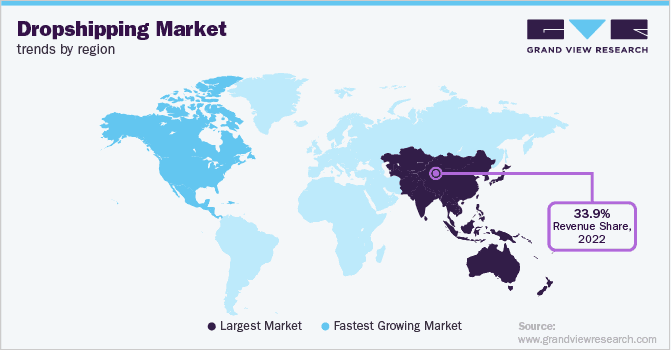
Key product trends
In 2021, clothing dominated the global dropshipping market, accounting for 20.8% of sales, followed by jewelry, home, and garden items.
The fashion segment is expected to grow significantly from 2022 to 2025 due to increasing consumer preference for branded goods and more accessible e-commerce platforms.
Similarly, the personal care electronics and food sectors are projected to see a CAGR of over 30%, driven by higher consumer spending on luxury and personal care products.
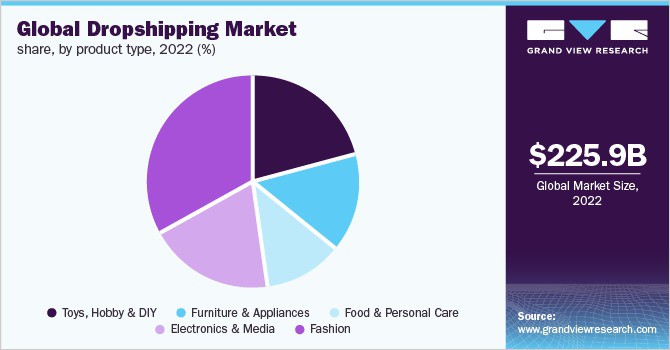
The rise of mobile commerce, increasing smartphone use, and social media are driving the shift toward e-commerce and dropshipping. Dropshipping stores active on social media platforms report a 32% increase in revenue.
The impressive figures speak volumes about the booming dropshipping market – it is clearly a thriving industry ripe with opportunities.
Future Trends of Dropshipping
As we look forward, the dropshipping world is bustling with innovations. From advanced technologies to changing consumer behaviors, let’s explore the trends shaping the future of dropshipping.
Technological advancements
In the future, technological advancements will revolutionize dropshipping in big ways. Here’s how technology is shaking things up in the industry.
Smoother operations with automation
The days of manually managing orders and inventory are long gone. Advanced software like Oberlo or Dropified integrates seamlessly with platforms like Shopify, automating everything from updating stock levels to processing orders. This saves you time and minimizes errors, making it easier to grow your business without any extra costs.
Picture this: a scenario where you receive an order for a popular item like wireless earbuds—the software updates your inventory and processes the order automatically, so you don’t have to do a thing.
And if you need an affordable CRM to keep things running smoothly, check out EngageBay.
Read more: Cracking The Marketing Automation Process.
Virtual reality (VR) and augmented reality (AR)

AR and VR technologies are making a significant impact on the dropshipping industry. Imagine trying on a watch from the comfort of your couch or seeing how a new sofa fits in your living room before buying it. That’s what VR and AR can offer.
By integrating these cool technologies, dropshippers can offer customers immersive shopping experiences. Think virtual try-ons for clothes, check out how furniture looks in your space, or see how a new pair of shoes fits your outfit.
It’s like bringing the store to your home!
Read more: Augmented Reality in E-commerce: How Does it Work?
Artificial intelligence (AI) and machine learning (ML)

Artificial Intelligence (AI) and Machine Learning (ML) are game changers in the dropshipping industry. Here’s how these technologies are shaping the future of e-commerce:
1. Better product recommendations
AI understands customers’ behaviors and preferences based on browsing and purchase history.
For example, suppose a customer regularly buys vintage T-shirts. In that case, AI can suggest similar items like retro sunglasses or vintage-style jeans. This allows for hyper-personalization in marketing and increases the chances of additional sales.
Moreover, AI can create realistic photo mock-ups of products in various settings. This helps customers to visualize products and boost their desire to buy.
Read more: 10 Best AI MockUp Generators (for Products, Websites and more)
2. Enhanced fraud detection
Machine Learning (ML) algorithms can detect unusual buying patterns, such as a sudden large order from a new location. This helps prevent fraud, keeping the store and its customers safe from scams.
3. AI-powered customer service

AI-powered chatbots can handle customer inquiries 24/7 without human intervention. For instance, a chatbot can provide instant answers if a customer wants to know the status of their order.
There are also voice-enabled AI chatbots that engage with customers over the phone. They can provide personal assistance and answer queries in real-time.
These AI agents can engage in a natural conversation. They can provide detailed information and guide the customer through the purchasing process.
Read more: The Beginner’s Guide to eCommerce Marketing Automation
4. One-click website builders
AI-powered tools can perform website optimization for dropshipping businesses. It reduces the time and effort required to set up an online store.
These tools come with pre-designed templates and automated features.
5. Picture recognition for product listings
AI can also help streamline product listing with picture recognition technology.
For example, suppose a dropshipper uploads a product photo. In that case, AI can automatically categorize it based on its characteristics, such as color, style, and type. This makes listing new products faster and ensures accurate product descriptions.
Blockchain technology
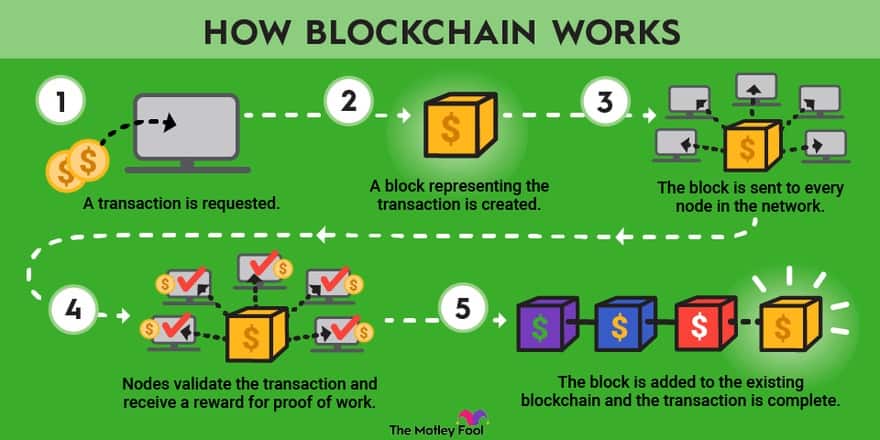
Blockchain technology is like a super-secure digital notebook. It records details across many computers, making it very hard to change past records. This innovation is improving dropshipping by adding trust and efficiency.
For example, when you buy a watch online, blockchain lets you track its journey from the seller to your doorstep. This ensures the watch is genuine and builds your trust in the purchase.
Moreover, blockchain speeds up payments and reduces costs, especially for international purchases. So, you get genuine products and enjoy smoother, cheaper transactions.
Upgraded tracking and shipping
Thanks to GPS and RFID tech, tracking packages has become more precise. Both sellers and buyers can now see exactly where an item is and when it will arrive.
Read also: How To Price Your Dropshipping Products for Maximum Profit
Market dynamics and consumer behavior
Customer behavior and preferences are always on the move. To thrive in the dropshipping industry, you have to keep up with these trends.
Personalization and customization
Shoppers want to feel special. They crave products that cater to their needs and tastes. This means dropshippers need to use tech to offer a personalized shopping experience. Using customer data, it can recommend products, send personalized emails, or create custom bundles.
For example, if you’re selling skincare products, use AI to suggest items based on past purchases. Did Mary buy a face mask last month? Recommend a matching moisturizer this month. It will lead to higher sales and make the customer happy.
Influence of social media
The widespread popularity of social media is undeniable. Its user base is ever-growing, with over 5.07 billion people actively using social media worldwide. Take a look at its increasing graph:
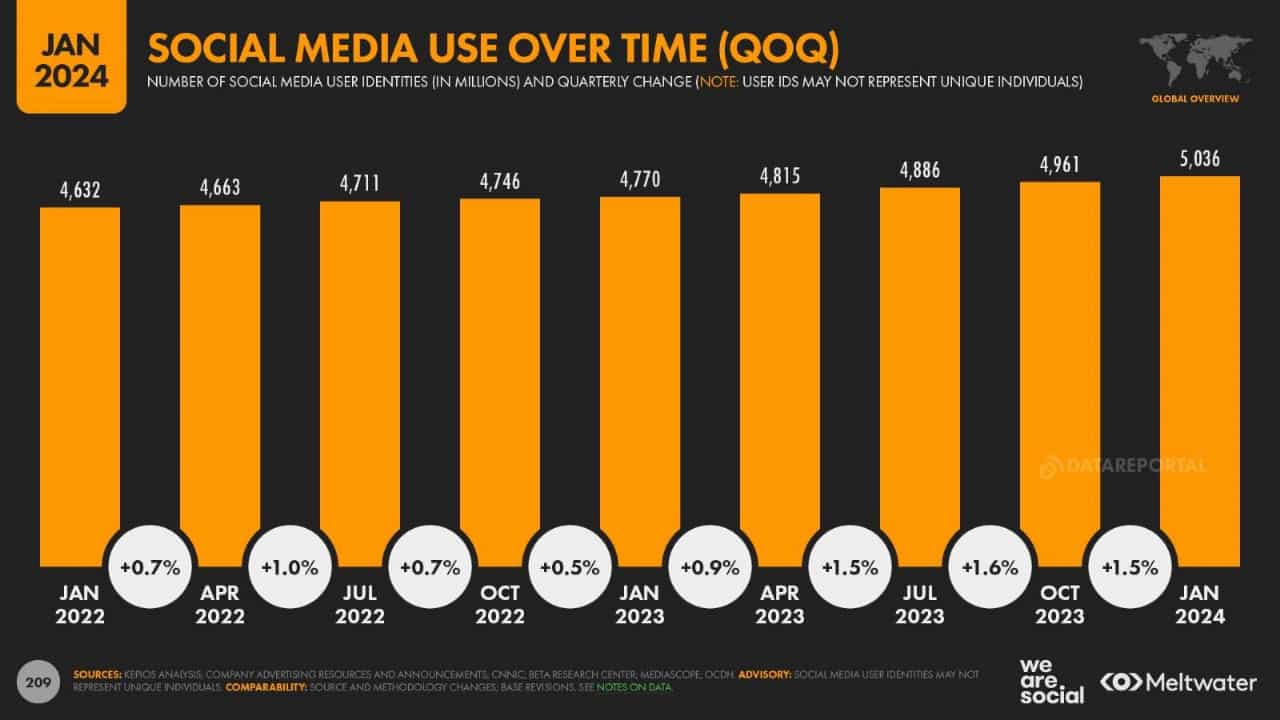
This immense popularity makes platforms like Instagram, TikTok, and Pinterest goldmines for social media marketing. Dropshippers can leverage these platforms to identify trending products and use the power of Influencer Marketing. Many brands are partnering with social media influencers to promote their products.
For instance, a fashion dropshipper can use brand collaboration to show their clothing line, driving traffic and sales through influencer posts and stories.
Read also: Is Dropshipping Legal? Laws and Regulations for Solopreneurs
Demand for sustainability and ethical sourcing
Sustainability is no longer a niche concern. More and more customers are becoming conscious of the environmental and social repercussions of their purchases. Hence, there has been a conscious shift to buying from brands that prioritize eco-friendly practices.
Dropshippers can accommodate this change by partnering with suppliers who use sustainable materials and practices. For example, offering products with biodegradable packaging or partnering with suppliers who use eco-friendly materials will appeal to environmentally conscious consumers.
Subscription-based models
Subscription boxes bring surprises to your customers. Whether it’s a monthly box of snacks or a weekly delivery of beauty products, customers love the convenience and the element of surprise.
Dropshippers can tap into this trend by offering subscription-based services. For example, a dropshipper selling pet supplies could offer a monthly subscription box with a variety of toys and treats for pets.
Read also: Seasonal Dropshipping Strategies to Boost Profits Year-Round
Innovations in payment methods
Gone are the days when cash reigned supreme. Today’s customers expect a variety of payment options, from digital wallets to buy now, pay later services.
Dropshippers should cater to these preferences to make the shopping experience as convenient as possible. Dropshippers could offer payment options through popular digital wallets like PayPal or Apple Pay.
Globalization and cross-border trade
The internet has made the world a smaller place, allowing dropshippers to reach customers worldwide. However, different markets have different preferences and regulations.
Dropshippers should design their offers in a way that suits local tastes and adhere to local laws. A dropshipper selling handmade crafts could research customer preferences in different countries and adjust their product offerings accordingly.
Read also: The Pros and Cons of Dropshipping: Does it Actually Work in 2024?
Supply chain innovations
The backbone of any successful dropshipping business is its supply chain. Innovations in logistics and sourcing are modifying how products are delivered to customers.
Global trade policy changes
Changes in tariffs, trade agreements, and import/export regulations can affect the cost and availability of products. There could be a change in tariffs or trade agreements. This could mean the cost of your products goes up or they become harder to get.
Let’s say you usually source your best-selling gadgets from Country Y. But suddenly, there’s a new tariff on those items. You might have to find a new supplier or rethink your pricing to stay in the competition.
Growing importance of local suppliers
With the rise of e-commerce, customers are increasingly expecting faster delivery times.
This has led to the growing importance of local suppliers in dropshipping. They can get products to your customers faster and cheaper.
Read more: 7 Profitable Dropshipping Niches for 2024
Challenges of Dropshipping You Should Prepare For
Now, let’s get to the challenging part of dropshipping.
Intense competition in the dropshipping market
The dropshipping industry is getting crowded with each passing day. More and more individuals and businesses are entering the market, making it a challenge to stand out.
As technology keeps taking leaps, the competition will only get fiercer.
The charm of AI and the explosion of e-commerce platforms is like a magnet, drawing even more people to dropship similar products at competitive prices.
Strategies to cope
1. Understanding your competition
Before learning how to beat your competition, knowing who your competition is or will be is crucial. This involves identifying others selling within your niche or similar products, a step known as competitor research.
You can do this by using a reverse image search on Google to find stores using the same product images. Instead of typing a description, you upload an image or provide a link to it, and the search engine finds all instances of that image on the web, revealing who else is selling the same products.
2. Niche marketing
Instead of appealing to everyone, focus on a specific niche market. Instead of selling “pet supplies,” consider targeting “organic pet treats for kittens.” This can attract a more dedicated customer base.
3. Unique branding
Standing out in the crowded dropshipping market requires uniqueness. Here are some tips:
- Use your own product images, not those from suppliers
- Create custom product descriptions rather than copying from suppliers.
- Design a professional website with unique themes and essential pages.
- Include videos on product pages for better engagement.
4. Customer experience
Providing an excellent customer experience can set you apart. Tips:
- Display product ratings and reviews to build trust.
- Ensure excellent customer service and respond to inquiries promptly.
- Include features that competitors might not have, such as PayPal checkout, trust badges, and clear refund policies.
Read more: eCommerce Customer Expectations: The Science of Delight
Adapting to technological changes
Technology is always evolving, and so is e-commerce. Keeping up with the latest tools and platforms can be overwhelming.
Strategies to cope
1. Continuous learning
Stay updated on the latest technological trends and tools in e-commerce. Learning about the latest AR technology for virtual try-ons can help you enhance customer engagement. Stay informed by taking online courses on platforms like Coursera or Udemy.
2. Automation
Use automation tools to streamline operations like inventory management and order processing. Examples include Oberlo for importing products and order fulfillment, TradeGecko for inventory management, and EngageBay for automated customer service and personalized email marketing.
3. AI integration
Various AI tools enhance dropshipping. Examples include Google Bard for research and ad copy, ChatGPT for SEO, Canva for graphic design, Speechify for voiceovers, etc.
4. Tech partnerships
Collaborate with tech-savvy partners, like Oberlo with Shopify or Zendesk with eCommerce, to integrate new technologies smoothly.
Quality control and shipping challenges
Ensuring product quality and managing shipping costs are big hurdles in dropshipping. Dropshippers often rely on suppliers to maintain quality, and this can bring unwanted challenges.
At the same time, dropshippers need to balance fast and affordable shipping. One way to do this is by including shipping costs in the product price.
Strategies to cope
1. Supplier vetting
It is the process of verifying potential suppliers before working with them. It helps ensure they are reliable, can meet quality standards, and deliver products on time.
2. Supplier relationships
Find the best dropshipping suppliers to ensure they provide reliable service. Some popular dropshipping suppliers include AliExpress, SaleHoo, Doba, etc.
3. Transparent pricing
Include shipping costs in product prices to manage customer expectations.
4. Local sourcing
Use regional suppliers to reduce delivery times and costs.
5. Shipping options
Offer multiple shipping options, such as standard, expedited, and express shipping. This will cater to different customer needs.
Read also: Dropshipping Basics: A 101 Guide for Small Business Success
Managing customer expectations
In today’s fast-paced world, customers want everything to be fast and flawless. They expect easy ordering, quick delivery, and hassle-free returns.
However, meeting these expectations can be challenging, especially when relying on third-party suppliers.
Strategies to cope
1. Clear communication
Set clear expectations with customers regarding delivery times and return policies.
2. Customer service
Provide exceptional customer service to handle issues promptly and effectively.
3. Feedback loops
Listening to customer feedback can help you identify areas for improvement and make necessary adjustments.
Read also: 6 Dropshipping Email Marketing Best Practices (2024)
Conclusion
The world of dropshipping is like a fast-paced rollercoaster with a lot happening in it: tech advancements, changing customer needs, and intense competition driving the ride. That’s a lot.
But don’t worry; these changes will also bring incredible opportunities to your plate.
So, if you want to stay ahead in the dropshipping game, it’s time to embrace new tech and keep fine-tuning your strategies.
The future of dropshipping looks bright, and with the right moves, your business can hit the mark!
FAQ
What technologies should dropshippers invest in for the future?
Dropshippers should invest in automation tools, AI for customer service and marketing, inventory management software, and data analytics tools. These technologies streamline operations, enhance customer experience, and provide valuable insights for decision-making.
How will consumer demand shape the future of dropshipping?
Consumer demand for faster delivery, higher quality products, and personalized shopping experiences will drive dropshippers to improve logistics, source reliable suppliers, and use AI for tailored marketing strategies. Meeting these demands will be key to staying competitive.
What are the potential risks for dropshipping businesses in the future?
Potential risks include supply chain disruptions, increased competition, changing trade policies, and reliance on third-party suppliers. Dropshippers must stay adaptable and build strong relationships with suppliers to mitigate these risks.
How can dropshippers stay competitive as the market evolves?
Dropshippers can stay competitive by continuously innovating, focusing on niche markets, leveraging technology, and providing exceptional customer service. Staying updated on industry trends and consumer preferences is also crucial.
What skills will be most valuable for dropshipping entrepreneurs in the future?
Valuable skills include digital marketing, data analysis, customer service, supply chain management, and technological proficiency. Entrepreneurs should also develop adaptability and problem-solving skills to navigate an evolving market.
How can dropshippers ensure product quality without physical inspection?
Dropshippers can ensure product quality by ordering samples from suppliers, building strong relationships with trusted suppliers, and implementing quality control processes. Regularly communicating with suppliers and monitoring customer feedback can also help maintain high standards.
What are the benefits of using local suppliers?
Using local suppliers can reduce delivery times and shipping costs, increasing customer satisfaction. It also allows for better communication and quicker resolution of any issues. Additionally, local sourcing supports regional economies and reduces the carbon footprint.
How can dropshippers manage shipping costs effectively?
Dropshippers can manage shipping costs by negotiating rates with shipping carriers, using regional suppliers, and including shipping costs in product prices. Offering multiple shipping options and using automated tools to track and optimize shipping expenses can also help.
What role will AI play in the future of dropshipping?
AI will revolutionize dropshipping by automating customer service, personalizing marketing, optimizing inventory management, and enhancing product recommendations. It will streamline operations, leading to improved customer experiences and efficiency.
How important is branding for dropshipping businesses?
Branding is crucial for differentiating your business in a crowded market. A strong brand builds customer trust and loyalty, and it helps attract and retain customers. Investing in unique branding and consistent messaging is essential for long-term success.
What strategies can dropshippers use to build customer loyalty?
Dropshippers can build customer loyalty by providing high-quality products, exceptional customer service, personalized experiences, and loyalty programs. Regular communication, soliciting feedback, and promptly addressing customer concerns are also effective strategies.
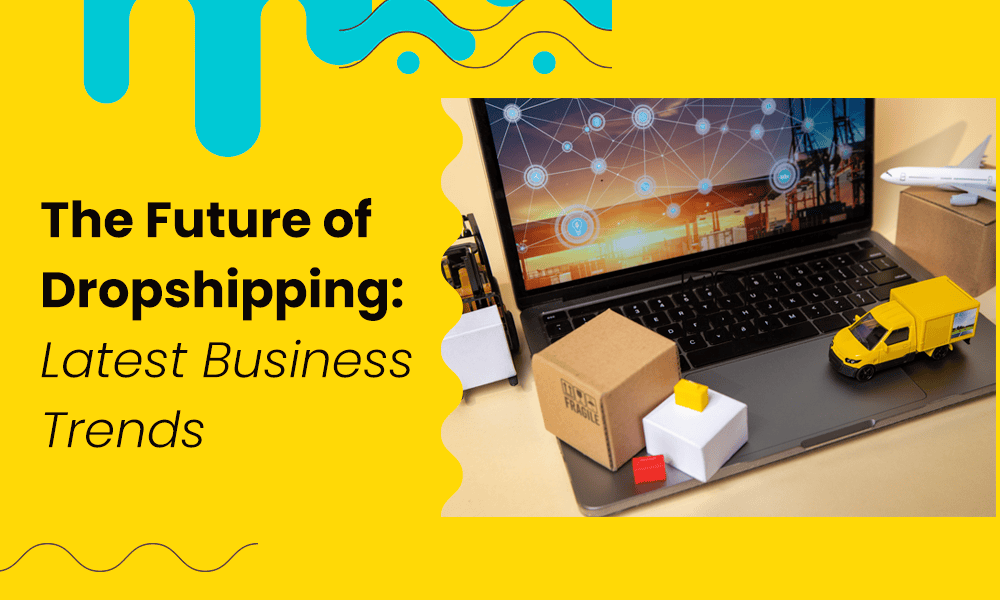
Pingback: 7 Profitable Dropshipping Niches for 2024
Pingback: 9 Reseller Marketing Strategies to Stand Out From the Crowd